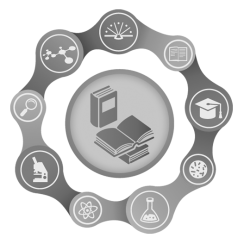mission
Preservation of books, archives and historical documents
We are a Leipzig company, founded in 2003. In addition to the traditional craftsmanship of our restorers and bookbinders, our commitment is, for example, the economic deacidification of large stocks with the in-house PAL Book Saver® process. Since the company was founded, we have been promoting the further development of this process together with national and international experts. The top priority is always to combine the care of manual work with the economic efficiency of the bulk technology.
Specialized partner
For archives, libraries and collections
we offer the most important services for stock maintenance under one roof. The latest technical processes as well as in-depth restoration knowledge and experience come together here and guarantee the highest level of processing of the valuable objects. Theoretical considerations or laboratory tests can thus be quickly checked for their practical suitability. A close link between science and production enables us to use the most advanced restoration technologies. Our company is certified according to DIN / ISO 9001: 2015.
restoration
Restoring archival documents and books with knowledge and experience
digitalization
Conservation competence meets demanding data processing
Deacidification
Preserve holdings using the PAL Book Saver® process
Plans & Maps
Large formats save with an eye for detail
Facsimile
What's what?
Cleaning
Reliably off the shelf and back
Conservation experts
Written cultural assets on paper
Libraries, archives and museums are not only suffering from the collapse of their holdings, but also from a lack of staff and financial constraints. In order to prevent losses among paper cultural assets, you need a knowledgeable partner who takes responsibility and also keeps an eye on costs. With their expertise in the important fields of mass deacidification of pulp-containing papers, stabilizing severely damaged sheets and restoring book covers, we offer tailor-made solutions from a single source for every need.
Darüber hinaus bieten wir jede denkbare Unterstützung und alle Maßnahmen rund um die Bestandserhaltung. Das handwerkliche Können traditionell arbeitender Restauratoren und modernstes Expertenwissen, sowie neueste wissenschaftliche und technologische Möglichkeiten, greifen effizient ineinander.
OUR ADDRESS
PAL Preservation Academy GmbH
Erich-Zeigner-Allee 64d
D-04229 Leipzig
PHONE +49 341 98388-0
FAX +49 341 98388-20
EMAIL info@pa-leipzig.de
Services at a glance

- Conservation strategies
– Entsäuerung PAL Book Saver®
- Wet treatment and beveling
- Columns of paper
- Paint and ink damage
- Digitization and facsimiles
- Delamination
- Decontamination and IPM
- Book cover restoration
- Map and plan processing
- Damage analyzes and reports
- Research and Development
Kg Bücher & Archivalien behandelt
Pages digitized and processed
Archive shelf meter files cleaned
Non-Discrimination Policy
The PAL pursues a policy of equal opportunities and stands up against discrimination, harassment or intimidation. In particular due to race, age, skin color, gender, national origin, physical or mental disability or religion. The PAL also undertakes to design workplaces in such a way that they are free from such discrimination. PAL does not tolerate any discrimination against employees, interns, clients, service providers or suppliers.